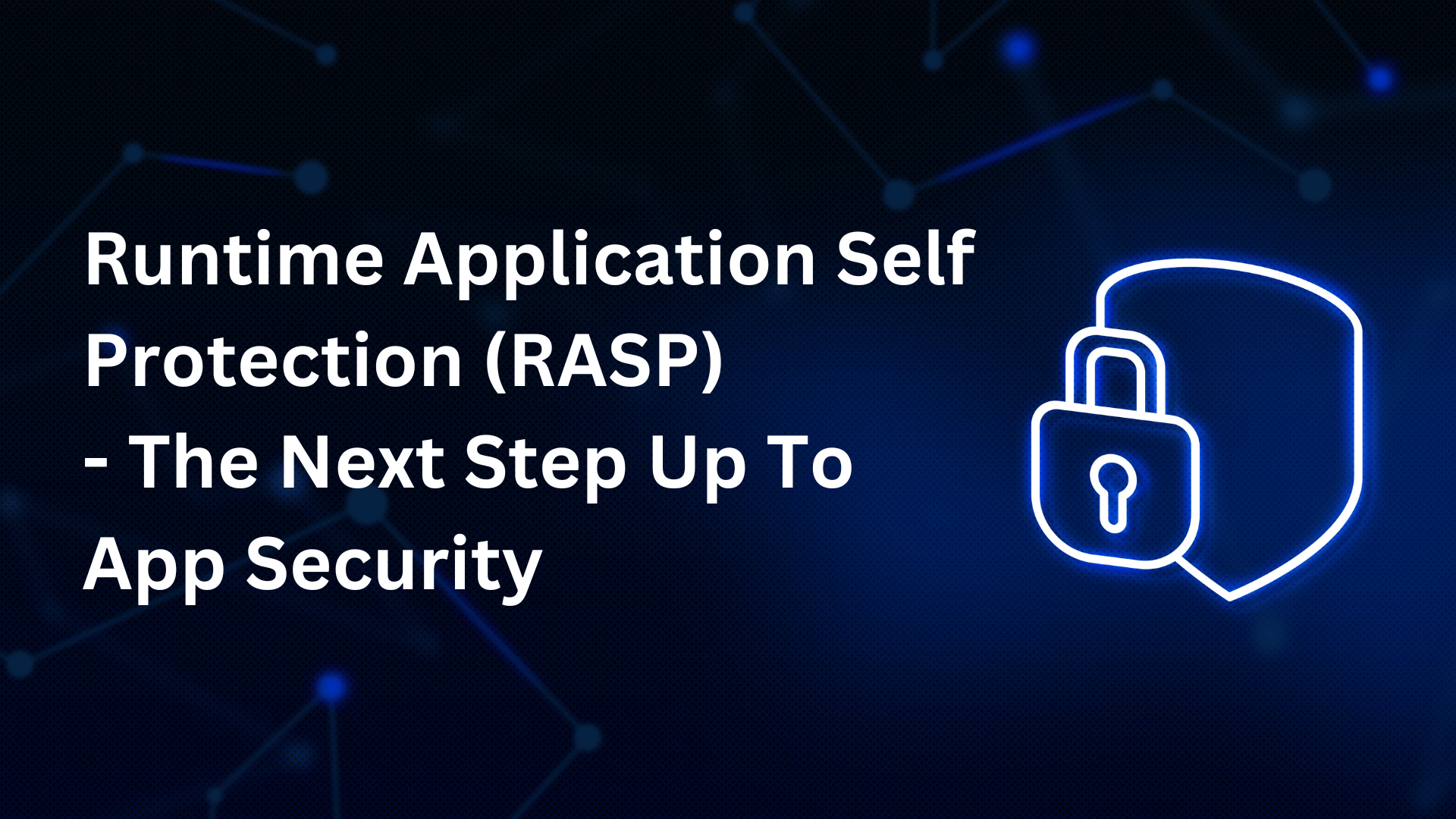
Runtime Application Self Protection (RASP) – The Next Step Up To App Security
Applications have become the prime target of cybercriminals who are constantly looking for opportunities to penetrate the organization’s security. Cybercriminals know that if they can detect and exploit a single vulnerability in any application, they can successfully pull off a data breach. With multiple running applications, the main challenge for network defenders is to protect all applications from cyber-attacks.
What Is Runtime Application Self Protection?
Runtime Application Self Protection or RASP is an advanced technology for applications that runs on a server and is designed to find and defend against attacks in real-time. When an application starts to run, RASP protects that app from malicious input by analyzing the application’s behavior.
When an application continuously monitors its behavior, it can identify and mitigate the attacks itself without human intervention. All calls from the application are intercepted, and the data requests are validated by RASP to ensure they are secure. This modern technology never affects the application’s design because RASP’s identification and security features operate on the application’s server.
How Does RASP Work?
As the name indicates, RASP allows the application to protect itself. The RASP security technology is rooted in software engineering techniques like secure SDKs, dynamic looks, and instrumentation. Generally, the sensors are inserted into the existing application code to track and control specific execution points in real-time.
RASP can be implemented in multiple ways. For example, developers can access the technology via function calls included in the application’s source code, or they can take a finalized application and put it in a wrapper to allow the application to be protected with a button push. The first way is more effective since developers can make crucial decisions about what needs to be protected in the application, like administrative functions, logins, or database queries.
RASP vs. WAF
RASP often gets confused with WAF (web application firewall). However, these two technologies are entirely distinct from each other. RASP blocks the malicious activities within the application itself before it occurs, whereas WAF examines the application traffic at the perimeter using static rules for potential malicious activities.
WAF technology requires a learning period to become efficient and still may not fend off newer attacks that it hasn’t encountered before. Using WAF, business is highly vulnerable when WAF hasn’t received new rules to defend against the emerging threat. However, RASP technology provides real-time defense at the application layer against numerous attacks.
RASP and WAF technologies can complement each other, and when combined, they can provide the business with the most robust and comprehensive application security. For example, WAF gives insights into the requests received by an application, whereas RASP determines how the application is handling those requests.
Key Benefits Of RASP
- Strong Protection
RASP technology protects the application from numerous security risks, including weak randomness, IDOR, insecure deserialization, untrusted client activity, and CSRF/SSRF. Once implemented, RASP serves as a self-sufficient security system that identifies and mitigates threats with little or no human intervention. Furthermore, thanks to the runtime execution and the application’s rich information, RASPs significantly avoid false positives as they make informed decisions.
- Easy Maintenance
RASPs are often set and forget add-ons. There are no blacklists, no learning processes, and no configuration for traffic rules. It’s the most cost-effective solution compared to the extent of security it offers. Therefore, its maintenance is easy and vigorously protects the application from potential threats. So, you get better development benefits, analytics, and protection all in one package.
- DevSecOps Support
Best practices of the security industry like push-left, which indicates that the application security should be implemented earlier in the software development life cycle, looks excellent on paper. However, developers lack advice on the application’s security code to adopt the push-left practices. Thus, RASP is the best option as it closes this gap by giving actionable security information to the developer so they can fix the vulnerabilities quickly before the business encounter any reputation damage.
- Accuracy In Security
Legacy approaches to protect applications and understand the application behavior is inherently inaccurate. Moreover, the network-based application requires constant tuning and generates many false positives. This is one of the crucial reasons RASP has taken the security inside the application. As a result, RASP has significantly increased accuracy to transform the adoption equation and allow organizations to protect their application portfolio and data with fewer resources.
Deployment Modes Of RASP
- Off Mode
Off mode is often used during the maintenance phase when developers want to test-run applications and test the vulnerabilities for specific threats. During the off mode, the application is allowed to receive all the requests without the security program interference.
- Alert Mode
During the alert mode, the security program monitors all incoming requests, and the concerned administrator is immediately informed when any malicious request is received. The admin team then gets the opportunity to intervene manually and take the right action. Alert mode is suited for some cases, such as financial transactions.
- Block Mode
Application security is the top priority for businesses, and block mode is used when admins have zero tolerance for malicious requests. The system blocks every suspicious user in the block mode, so the application remains protected from spam attacks. This is suited for applications where termination of user session abruptly is not a big issue.
The Final Verdict
Applications are the most crucial asset for every business, and RASP security has evolved immensely, allowing developers to neutralize threats effectively. If you want to protect your business application from cyber-attacks, you should consider the money, time, and resources spent on the security systems. The RASP solution for your business application must be easily deployable and can handle a wide range of vulnerabilities. In addition, it should be accurate with minimal false positives and block malignant requests.
SecIron has got you all covered, which can provide game-changer RASP security solutions for your organization. SecIron is a breakthrough technology that provides highly accurate protection of applications without disruptive scanning and vigorously protects your business application to prevent data breaches.




